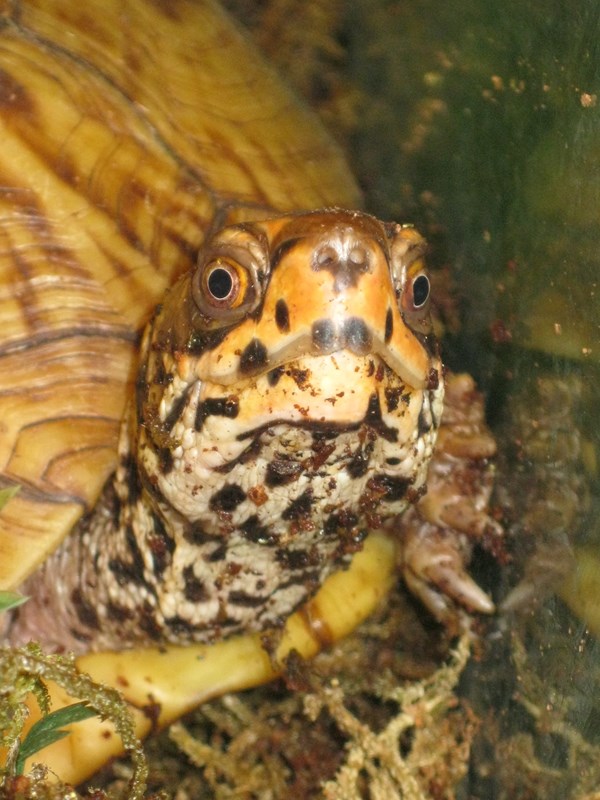
Three Toed Box Turtle
Scientific Name Terrapene carolina triunguis
Native To Central and southeastern United States
Habitat Wooded swamps, marshes and grasslands
Diet Omnivore: moss, grass, fallen fruit, crickets, grasshoppers, snails and slugs
Size and Age Average size 8-13 cm (3-5 in); average lifespan of 50-60 years
Natural History
The three toed box turtle is a subspecies of the eastern common box turtle. Their name comes from their back feet, which only have three toes. They can live in a wide variety of habitats, from wooded swamps to grassy fields. Three toed box turtles are most healthy and abundant in moist, forested areas with plenty of underbrush. They will often venture into shallow water at the edge of ponds, streams, or puddles. Box turtles are unique in that they have a hinged shell that gives them the ability to conceal their body entirely inside, allowing them to hide from predators.
Vulnerable

Conservation Status
Box turtle populations are declining because they are being captured and sold in the animal trade. Many countries protect box turtle populations and have laws against collecting box turtles from the wild. Wild caught turtles do not adjust well to captivity; many of them die from stress. It is best to get a pet box turtle bred in captivity from a reputable organization, such as the Edmonton Reptile & Amphibian Society (ERAS).
Interesting Facts
- Males have red eyes, while females have brown eyes.
- Their shell can hold the weight of a buffalo.
- All turtles have 13 scutes (horned sections of their shells).
